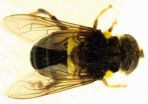(Press-News.org) Clarksburg, Md. – BrightFocus Foundation, a nonprofit organization that funds research worldwide to save sight and mind, today released the results of a survey of more than 170 leading biomedical scientists that explores the most significant barriers to progress in ending brain and eye diseases. The survey indicates that a lack of dependable funding is threatening to create a deficit of highly skilled scientists at a time when the nation could soon face a health care crisis brought on by devastating disorders like Alzheimer's, macular degeneration, and glaucoma.
"Cures for these brain and eye diseases can be found if we give researchers the resources and tools they require," said Stacy Haller, president and chief executive officer of BrightFocus Foundation, formerly named American Health Assistance Foundation. "Nearly 20 million people in the U.S. are affected by Alzheimer's disease, macular degeneration, or glaucoma. That number is climbing with an aging population, threatening our families, our health care, and our economy. Eradicating these diseases should be a much higher national priority."
The new survey taps into the attitudes and opinions of more than 170 top brain and eye disease scientists from around the world who have received foundation research grants in recent years. Respondents expressed near-consensus on the impact that funding sources play in their field:
94 percent agreed that a lack of federal funding for brain and eye disease research is impeding scientific discoveries.
91 percent agreed that a lack of research funding is driving scientists from the field.
96 percent identified limited funding as a top barrier to entry for new scientists in the fields of brain and eye disease research.
"By now, it should be clear that the cost of adequately supporting efforts to prevent and treat cognitive and vision diseases is minuscule compared to the cost of failing to do so," said Guy Eakin, Ph.D., vice president of Scientific Affairs for BrightFocus Foundation. "The total U.S. health care cost for Alzheimer's alone is $200 billion annually and is expected to soar to $1.1 trillion per year by 2050 if we don't have the scientific discoveries made possible by research funding. Yet budget cuts for research continue, and we're losing the talents of a generation of scientists."
###
For more in-depth analysis of survey results and recommendations, visit www.brightfocus.org/ResearcherSurvey2013.
About BrightFocus Foundation
BrightFocus Foundation is the new name, as of February 1, 2013, for the nonprofit American Health Assistance Foundation, celebrating 40 years of support for health research and public education. The new BrightFocus name reflects our redoubled commitment to advancing knowledge that saves mind and sight. Our three programs – Alzheimer's Disease Research, Macular Degeneration Research, and National Glaucoma Research – focus on the toughest challenges facing brain and eye health. For more information, visit www.BrightFocus.org.
Leading researchers warn of 'brain drain' as scientists struggle to find funding
New survey outlines funding deficiency in brain and eye disease research
2013-01-31
ELSE PRESS RELEASES FROM THIS DATE:
A 'neurosteroid' found to prevent brain injury caused by HIV/AIDS
2013-01-31
Bethesda, MD—A team of scientists from Canada, Thailand and Morocco have found that DHEA-S may prevent neurocognitive impairment that affects a significant percentage of AIDS patients. In a report appearing in the February 2013 issue of The FASEB Journal, they describe how a network of steroid molecules found in the brain, termed "neurosteroids," is disrupted during HIV infection leading to brain damage. This suggests that treatment with one of these steroid molecules, called DHEA-S, may offset the disruption caused by the virus to prevent or reduce brain damage.
"From ...
Health care providers may be at greater risk of flu exposure
2013-01-31
WINSTON-SALEM, N.C. – Jan. 31, 2013 – Some people with the flu emit more of the air-borne virus than others, suggesting that the current recommendations for infection control among health care providers may not be adequate, according to a new study from researchers at Wake Forest Baptist Medical Center.
The study is published in the Jan. 31 online edition of The Journal of Infectious Disease.
"Our study provides new evidence that infectiousness may vary between influenza patients and questions the current medical understanding of how influenza spreads," said Werner Bischoff, ...
Gas promises bumper black hole 'weigh-in'
2013-01-31
A new way of measuring the mass of supermassive black holes could revolutionise our understanding of how they form and help to shape galaxies.
The technique, developed by a team including Oxford University scientists, can spot the telltale tracer of carbon monoxide within the cloud of gas (mostly hydrogen) circling a supermassive black hole at the centre of a distant galaxy. By detecting the velocity of the spinning gas they are able to 'weigh' (determine the mass) of the black hole.
Detailed information on supermassive black holes, thought to be at the heart of most ...
Study finds hormones can change the breast's genetic material
2013-01-31
Melbourne scientists have discovered how female steroid hormones can make dramatic changes to the genetic material in breast cells, changes that could potentially lead to breast cancer.
Researchers from the Walter and Eliza Hall Institute of Medical Research in Melbourne, Australia, have identified how pregnancy hormones send signals to critical molecules on the DNA to make changes in the epigenome. The epigenome is a series of chemical tags that modify DNA, controlling which genes are switched on and off.
Professor Jane Visvader, Dr Bhupinder Pal, Professor Geoff Lindeman ...
Cyclone did not cause 2012 record low for Arctic sea ice
2013-01-31
It came out of Siberia, swirling winds over an area that covered almost the entire Arctic basin in the normally calm late summer. It came to be known as "The Great Arctic Cyclone of August 2012," and for some observers it suggested that the historic sea ice minimum may have been caused by a freak summer storm, rather than warming temperatures.
But new results from the University of Washington show that the August cyclone was not responsible for last year's record low for Arctic sea ice. The study was published online this week in Geophysical Research Letters.
"The ...
Electronic health records could help identify which patients most need ICU resources
2013-01-31
ANN ARBOR, Mich. — A national shortage of critical care physicians and beds means difficult decisions for healthcare professionals: how to determine which of the sickest patients are most in need of access to the intensive care unit.
What if patients' electronic health records could help a physician determine ICU admission by reliably calculating which patient had the highest risk of death?
Emerging health technologies – including reliable methods to rate the severity of a patient's condition – may provide powerful tools to efficiently use scarce and costly health resources, ...
International team observe 'hungry twin' stars gobbling their first meals
2013-01-31
AMHERST, Mass. – Just-forming stars, like growing babies, are always hungry and must "feed" on huge amounts of gas and dust from dense envelopes surrounding them at birth. Now a team of astronomers including Robert Gutermuth, a University of Massachusetts Amherst expert in imaging data from the Spitzer Space Telescope, reports observing an unusual "baby" star that periodically emits infrared light bursts, suggesting it may be twins, that is, a binary star. The discovery is reported this month in Nature.
The extremely young object, dubbed LRLL 54361, is about 100,000 years ...
Novel materials shake ship scum
2013-01-31
DURHAM, N.C. – Just as horses shake off pesky flies by twitching their skin, ships may soon be able to shed the unwanted accumulation of bacteria and other marine growth with the flick of a switch.
Duke University engineers have developed a material that can be applied like paint to the hull of a ship and will literally be able to dislodge bacteria, keeping it from accumulating on the ship's surface. This buildup on ships increases drag and reduces the energy efficiency of the vessel, as well as blocking or clogging undersea sensors.
The material works by physically ...
Biologistics: How fast do chemical trains move in living cells?
2013-01-31
The rate of chemical processes in cells is dictated by the speed of movement (diffusion) of molecules needed for a given reaction. Using a versatile method developed at the Institute of Physical Chemistry of the Polish Academy of Sciences in Warsaw, researchers were able to predict for the first time the diffusion coefficients of all proteins in Escherichia coli. The achievement is important not only for biologists and chemists, but also for... transport companies.
Understanding of chemical foundations of life requires knowledge about the rate of chemical reactions in ...
24 new species of flower fly have been found in Central and Southern America
2013-01-31
A team of scientists have described twenty four new species of dipterans belonging to Quichuana genus, of which only a further 24 species were known. The researchers, including two Spanish biologists, have been studying the forests of Central and Southern America for ten years and they have now published their results in the 'Zoological Journal of the Linnean Society'.
A ten-year study in forests of the American continent has resulted in the description of 24 new insect species from the Quichuana genus that are also known as 'flower flies'.
Up until now only a further ...
LAST 30 PRESS RELEASES:
UF dives deep into predicting storm damage with computer models
A stormy ocean voyage yields insights on the global carbon cycle
Scientists identify first non-coding gene that controls cell size
Demonstration of altermagnetism in RuO₂ thin films -- A new magnetic material for the AI era
Penn researchers awarded $25M to conduct trial using smartphones to fight heart disease
PCORI awards funding for new patient-centered healthcare research
Exploring the origins of the universe: 145 low-noise amplifiers complete ALMA telescopes
Empress cicada wings help illuminate molecular structure
Using sound waves to detect helium
Time burden in patients with metastatic breast and ovarian cancer from clinic and home demands
Researchers discover bias in AI models that analyze pathology samples
Scientists ID potential way to prevent brain injuries from triggering Alzheimer's
MASTER 2nd Open Call: Execution period kick-off
Algae for health in food and pharma
Advanced microrobots driven by acoustic and magnetic fields for biomedical applications
Chicago health information leader recognized for raising CPR readiness and blood pressure awareness
The Intimate Animal, a new book from Kinsey Institute Executive Director Dr. Justin Garcia
When blue-collar workers lose union protection, they try self-employment
New video dataset to advance AI for health care
MEA-based graph deviation network for early autism syndrome signatures in human forebrain organoids
New modeling approach sheds light on rare gut disease
Study documents potentially hazardous flame retardants in firefighter gear
Can certain bacteria regulate aging of the immune system and its related alterations?
AI model helps diagnose often undetected heart disease from simple EKG
There are fewer online trolls than people think
Cell membrane fluctuations produce electricity
Jeonbuk National University study shows positive parenting can protect adolescents against self-harm
Surface-engineered ZnO nanocrystals to tackle perfluoroalkyl substance contamination
This new understanding of T cell receptors may improve cancer immunotherapies
A new fossil face sheds light on early migrations of ancient human ancestor
[Press-News.org] Leading researchers warn of 'brain drain' as scientists struggle to find fundingNew survey outlines funding deficiency in brain and eye disease research



